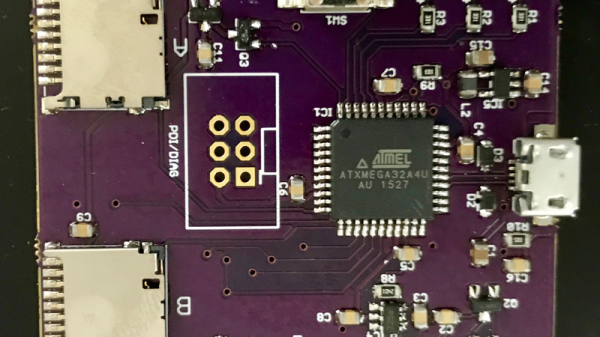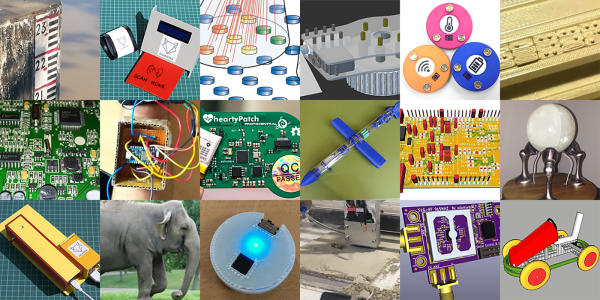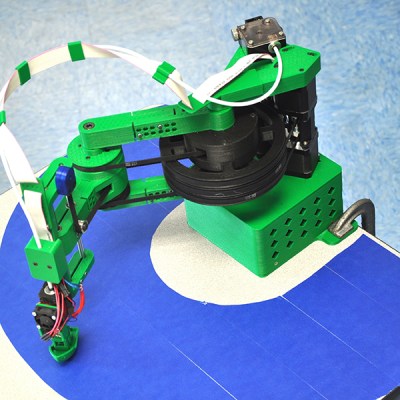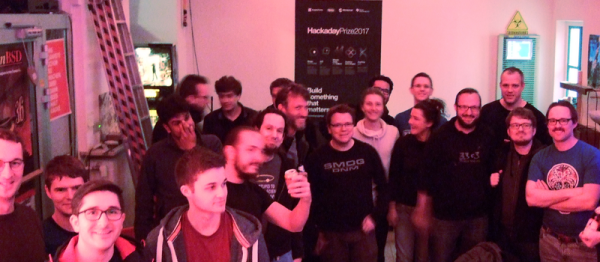Here’s a puzzler for you: how do you securely send data from one airgapped computer to another? Sending it over a network is right out, because that’s the entire point of an airgap. A sneakernet is inherently insecure, and you shouldn’t overestimate the security of a station wagon filled with tapes. For his Hackaday Prize entry, [Nick Sayer] has a possible solution. It’s the Sankara Stones from Indiana Jones and the Temple of Doom, or a USB card reader that requires two cards. Either way, it’s an interesting experiment in physical security for data.
The idea behind the Orthrus, a secure RAID USB storage device for two SD cards, is to pair two SD cards. With both cards, you can read and write to this RAID drive without restriction. With only one, the data is irretrievable so they are safe during transit if shipped separately.
The design for this device is based around the ATXMega32A4U. It’s pretty much what you would expect from an ATMega, but this has a built-in full speed USB interface and hardware AES support. The USB is great for presenting two SD cards as a single drive, and the AES port is used to encrypt the data with a key that is stored in a key storage block on each card.
For the intended use case, it’s a good design. You can only get the data off of these SD cards if you have both of them. However, [Nick] is well aware of Schneier’s Law — anyone can design a cryptosystem that they themselves can’t break. That’s why he’s looking for volunteers to crack the Orthrus. It’s an interesting challenge, and one we’d love to see broken.








 [Nick] is designing a new kind of RepRap,
[Nick] is designing a new kind of RepRap, 


 [TegwynTwmffat] has
[TegwynTwmffat] has 









